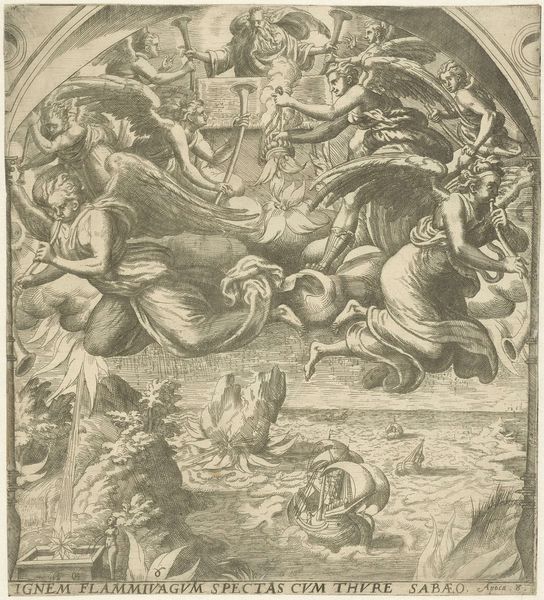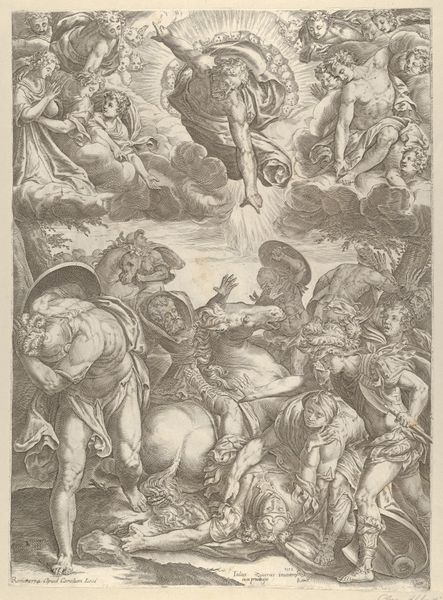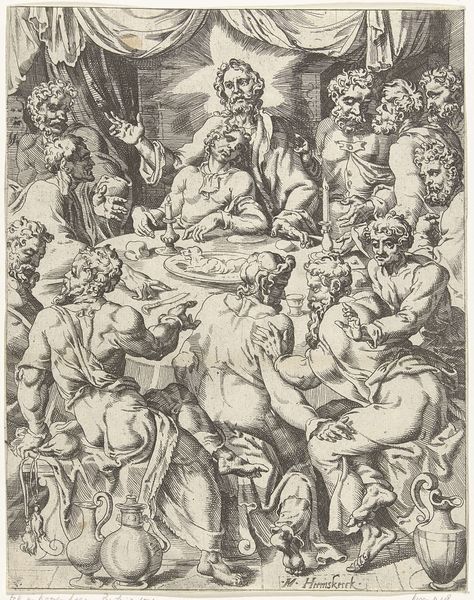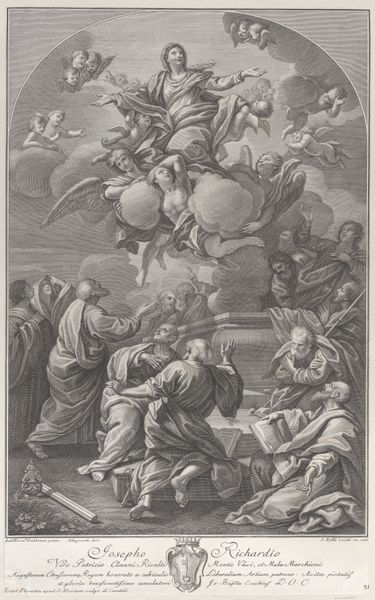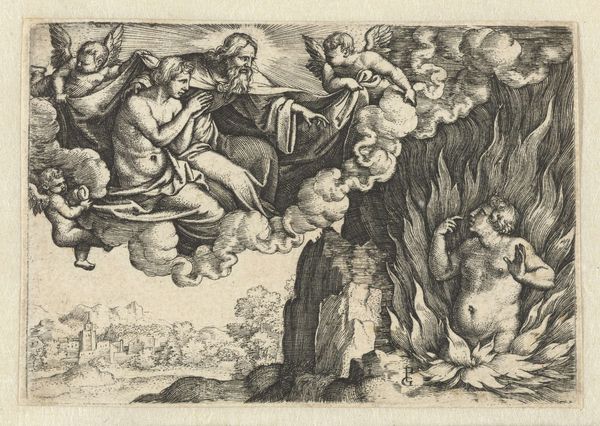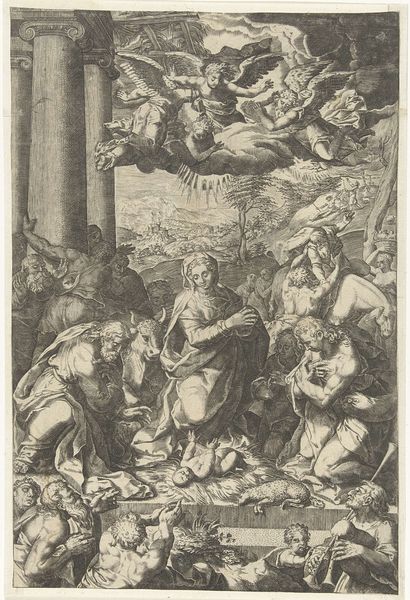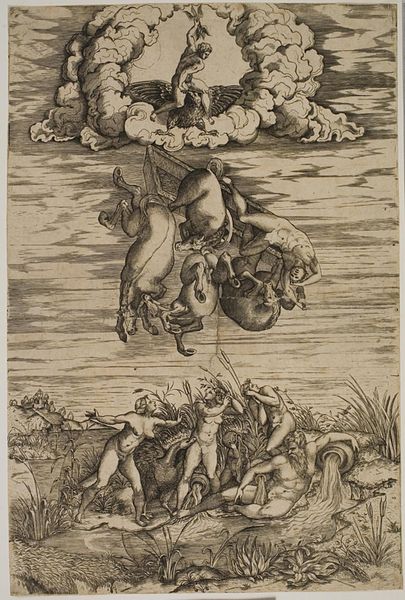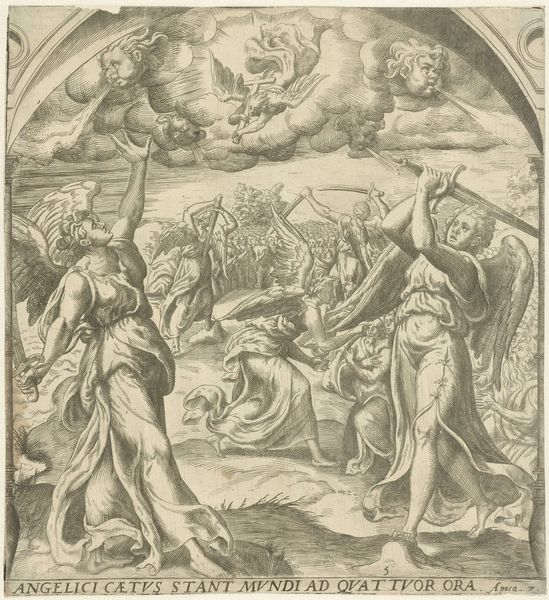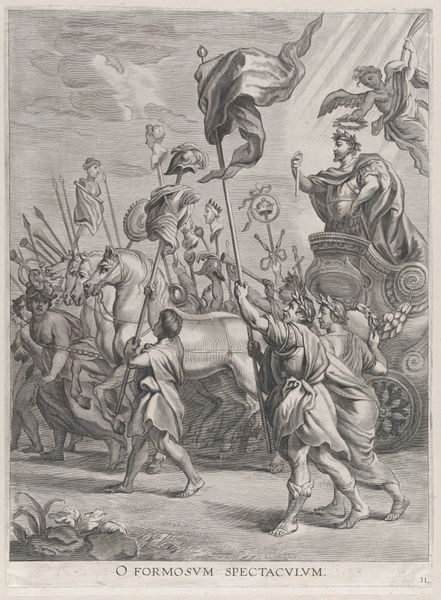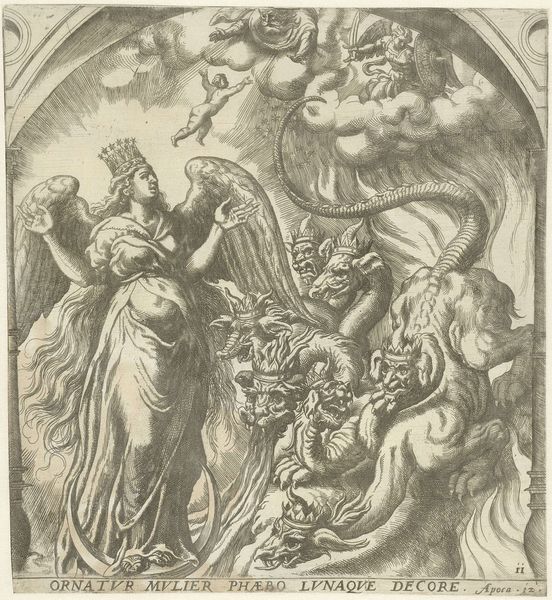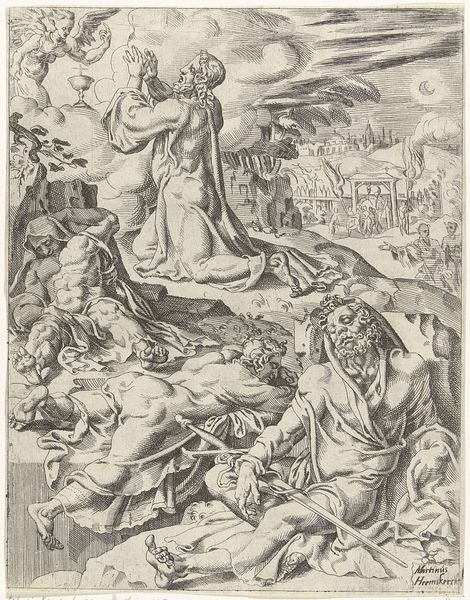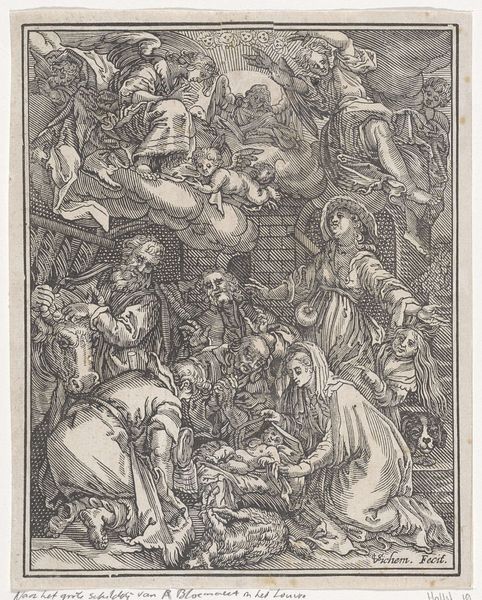
drawing, print, ink, pen, engraving
#
drawing
#
ink drawing
#
narrative-art
# print
#
pen illustration
#
pen sketch
#
figuration
#
ink
#
pen-ink sketch
#
pen
#
history-painting
#
northern-renaissance
#
engraving
Dimensions: width 196 mm, height 246 mm
Copyright: Rijks Museum: Open Domain
Curator: Immediately, I’m struck by the sheer busyness of this engraving. It’s densely packed with figures, drawing my eye across different planes of action. Editor: This print, "God Appearing Before Abraham," comes to us from Dirck Volckertsz Coornhert, dating back to 1549. You can find it in the Rijksmuseum’s collection. It’s a pen and ink composition rendered in engraving. Coornhert was working during a period when printmaking was becoming increasingly important for disseminating ideas and biblical scenes, especially. Curator: The positioning of God feels especially important, doesn't it? Elevated on swirling clouds with cherubic figures, yet bearing down towards Abraham almost oppressively. There is also this very expressive hand gesture directed towards the ground. A potent display of divine authority, wouldn’t you agree? Editor: Indeed. The imagery, consistent with the Northern Renaissance, draws upon a well-established visual vocabulary for representing divine encounters. Consider the recurring symbolism of clouds denoting a sacred space. The bearded figure of God, held aloft by cherubs, visually reinforces the traditional hierarchy with God situated far above earthly concerns. The architecture in the background symbolizes a developing nation in the presence of Abraham’s seed and legacy. Curator: Looking closely at Abraham, I'm seeing so much detail embedded in the way his cloak folds around him, his posture is wonderfully contorted between submission and supplication, which highlights his internal struggle when hearing God’s promise to him. Editor: Coornhert truly captures a crucial moment in the narrative. The complex interaction of gazes – Abraham toward God, while others within the scene are engaged in various daily activities - underscores Abraham's unique and personal connection to the divine. Curator: It all feels deliberate and laden with layers of meaning. There is even the pile of bones or a body that seems discarded on the side of Abraham's prayer, perhaps to remind us of our own mortality. Editor: Exactly. By weaving these different symbols together, Coornhert created a scene rife with both theological weight and societal reflection, fitting for a time of great religious upheaval. Curator: Seeing how Coornhert captured that raw interplay between faith and everyday life, it feels quite timeless, doesn’t it? Editor: Yes, and I appreciate the window into the religious and social dynamics of the 16th century this work provides. It is a fine example of art as historical documentation and visual storytelling.
Comments
No comments
Be the first to comment and join the conversation on the ultimate creative platform.
